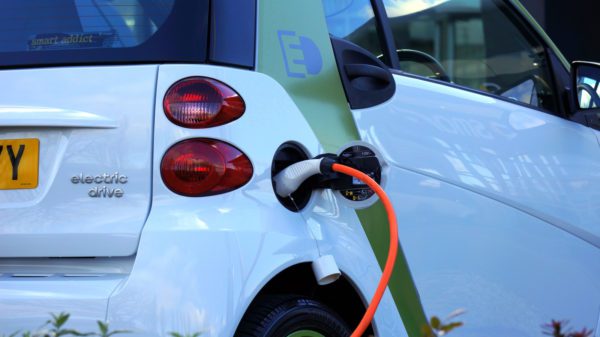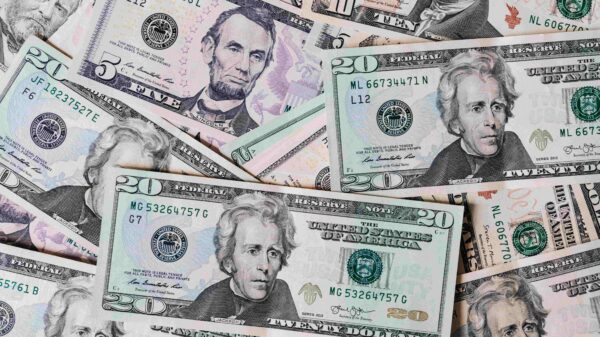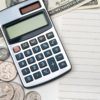In a previous life, I worked in sales. But not just your everyday, run-of-the-mill brand of sales: I worked in a sleazy industry that championed predatory lending practices and distorted the pricing of its lackluster product, which often sent my clients spiraling down a rabbit hole of debt. And to make matters worse, this entire enterprise was buoyed by your tax dollars, so—regardless of macroeconomic patterns—this dubious marketplace remains untouchable.
What was this ethically questionable industry? I worked in higher education.
More specifically, I worked in college admissions and financial aid. Many of my former admissions colleagues and peers—all of whom I consider to be good friends—probably take offense to how I characterized their livelihood, but I would have too back in the day, when I was in the thick of it.
After a few years, I came to the realization that I was no better than a car salesman.
I took my pride in my work, but it was taxing (pun unintended). I spent nearly one-fourth of my year on the road—living in hotels, visiting high schools, attending college fairs, and pitching my school as the place to be for unsuspecting 17-year-olds.
The gig was not only physically exhausting, but also morally. What once seemed like an altruistic mission—helping the young people of today become the leaders of tomorrow—transformed into a much more realpolitik mindset. Slowly, I realized my job wasn’t to empower young people, but to get them and their parents to commit to paying a very large sum of money—either by cash or credit—for a little piece of paper that continues to diminish in value.
The markup on tuition is astronomically higher than the markup on a car.
I always considered myself to be on the up-and-up with the families with whom I worked. I never lied to my students or their families. I always represented my institution truthfully. I always worked hard to get them the most “bang for their buck.”
However, it didn’t matter how ethical I behaved as an admissions counselor; the entire system is broken. Moral hazard has run amok in the college system.
What follows are just a few reasons why car lots behave more ethically than colleges and universities.
Markups
Product pricing always comes with a little fudge room. Many refer to it as markup. This is just a given in the world of sales and retail. That wiggle room allows sales reps the ability to offer “one time deals,” which serve as an effective call-to-action when closing the deal.
In the higher-ed world, we refer to this wiggle room as “discounting.” Discounting is the act of advertising an astonishingly high rate of tuition, then bargaining with scholarships, grants, loans, and other forms of financial aid until the buyer finds a less painful price point that is still astonishingly high, but still lower than before.
Sticker shock is a very real thing in the college admissions gig. During my tenure in higher education, annual tuition at my college was roughly $30,000 per year. But it didn’t stop there: cost of living also included $4,000 for room, $4,000 for board, $750 for books, and $2,500 for other residual expenses (insurance, vehicle maintenance, etc.) that families should include in their annual budget. When it was all said and done, that annual amount exceeded the $40,000 waterline—and this was only for one year.
Plus, to make matters worse, tuition always rises as if it is Newton’s lesser-known “fourth law” of motion. On average, colleges jack up tuition roughly 5 percent per year. The board of trustees at my college, for example, was committed to “generous increases” that didn’t exceed two percent.
“But don’t worry,” I told parents. “Nobody ever pays the full price.” The discount rate varied for each student, but it was easy to cut tuition in half through discounting so that it didn’t seem as bad.
A car dealer’s markup is roughly five percent above the manufacturer’s suggested retail price (MSRP). For my college, that markup was 115 percent! Sadly, this markup is average across all of the higher-ed industry.
My college was not unique in this upcharge. The institutional discount rate is universal in the higher-ed world and has steadily increased nationwide. A 2015-2016 report by the National Association of College and University Business Officers (NACUBO) estimated that institutional discount rates peaked at 48.6 percent that year—a trend they deemed to be “not sustainable.”
While some schools rely upon hefty endowments, the majority of schools are classified as “tuition-driven.” The same NACUBO study reported that only 10.8 percent of institutional grants were funded by endowments in 2015-2016. This means that the dollars received from incoming students are then recycled as scholarships for future students.
American higher education is caught in a vicious cycle of robbing Sophomore Peter to pay Freshmen Paul. But most families feel like they are getting the deal of the century thanks to tuition discounting.
“Discounts”
Car dealerships don’t require a tax return to determine how much to charge you for that car.
The discount rate is the result of the backward math that takes place during financial aid season.
All families seeking financial aid must first complete a Free Application for Federal Student Aid, also known as the “FAFSA.” Hopefully, the irony of the word “free” isn’t lost on everybody.
For those who have not had the “pleasure” of applying for financial aid, consider it the equivalent of filling out your tax return— again. The FAFSA requires a detailed accounting of a family’s financial situation before any financial aid is allocated.
Once a FAFSA is completed, a family’s estimated family contribution (EFC) is determined. This is the end result of a convoluted algorithm that determines a family’s ability to pay for college. Colleges and universities subtract the EFC from the cost of attendance (tuition, room, board, books, etc.) to determine “need.”
As many families will attest, the EFC overestimates a family’s ability to pay for college. It is a one-size-fits-all metric that does not take into account regional cost of living, utilized outdated budgeting estimates, makes many illogical assumptions, and ignores situational expenses (for example, large medical bills). There are some means to appeal and adjust mitigating circumstances, but it does little shave points off the EFC.
But name any other product or service that evaluates your ability to pay before setting a price. You would hard-pressed to find other examples that don’t involve market distortions created by government intrusion (e.g., healthcare, etc.), which conveniently brings us to the next point.
Bailouts
The auto industry was only bailed out once; higher-ed makes it an annual tradition.
Even one bailout is too much, in my opinion. The auto industry was on the receiving end of a $79.7 billion handout, following the financial crisis of 2008. Though monies were paid back, the Congressional Budget Office estimates that the program still cost taxpayers roughly $14 billion.
Meanwhile, the postsecondary market is bailed out every single year. In 2014 alone,$133.8 billion in federal dollars were allocated to over 5,000 postsecondary institutions to be used as financial aid.
This aid, however, doesn’t come in the form of a federal check made out to a needy student. Colleges and universities are the beneficiaries of these funds. Once enrollment counts for the upcoming year are finalized, funds are issued to the colleges who then, in turn, manage how they are distributed.
And this annual bailout is fueling rising costs. Studies have found that federal funding directly contributes to inflated tuition pricing.
The Federal Reserve Bank of New York found that every dollar awarded by Pell Grants resulted in a 55-cent increase in the “sticker price” of college tuition for students. Anecdotally, the board of trustees at my school waited for Pell Grant amounts to be set before they officially set our school’s tuition rate. This residual effect, in conjunction with federal student aid, has continued to inflate the price of tuition year after year.
Throwing more public money toward higher education has created an opposite effect on the affordability of college. According to inflation-adjusted figures, public investment in higher education is ten times higher now than it was in 1960. For perspective, military spending is only 1.8 times higher. Meanwhile, college tuition is 1,120 percent higher during roughly the same time period.
Consider the practice of federal financial aid as the equivalent of TARP, the auto bailout, another form of corporate welfare doled out to “too large to fail” institutions, who demand that taxpayers foot the bill for their failing business models.
Potential Bubble?
Interestingly enough, total debt issued for both industries is comparable. There is about$1.4 trillion of student loan debt and about $1 trillion in auto loan debt.
Speculation of a possible auto loan bubble has surfaced as delinquency rates started to spike—specifically in the subprime markets that target borrowers with bad credit ratings or minimal collateral. Default rates for these risky loans were highest—14.4 percent—in 2014.
Meanwhile, what was the rate of default for student loans in 2014? Again, it was a comparable at a rate of 13.7 percent.
But that student loan debt bubble may be intensifying. According to The Wall Street Journal, “43% of the roughly 22 million Americans with federal student loans weren’t making payments” as of January 2016. Furthermore, 3.6 million borrowers were in default on $56 billion in student debt.
What makes student debt troubling is the utter lack of underwriting. College-seeking families can borrow tens of thousands of dollars with virtually no due diligence performed by the lender (e.g., the federal government playing loose and fast with your money).
There is no consideration of the applicant’s ability to repay the loan, so it’s quite easy for a student to finance a degree with low market value. There is no risk assessment of an applicant’s potential for default, all while student loans traditionally have a higher default rate in comparison to mortgages.
There is no collateral requirement, so loans are not secured and recipients invest nothing up front. Also, recipients aren’t required to make payments until after they have completed their degree or drop below half-time status, so returns on investment are slow to trickle back.
On top of all of this, it is virtually impossible to discharge your student loans if you file for bankruptcy. Even with all of this, student loans have managed to escape the label of “predatory lending.”
Even if the bubble were to burst, think about who owns the paper on all that debt? Keep in mind that the colleges and universities already got paid. Everybody else—namely, taxpayers—will foot this bill if things went south. Those paying both income taxes and student loans are already double dipping into this postsecondary Ponzi scheme.
No End In Sight
If you have spent any amount of time on a college campus recently, you have witnessed firsthand how lavish the “college experience” has become: multi-million dollar educational facilities, picturesque landscaping, posh residential suites, athletic training facilities fit for Olympians, nationally-televised sports programs (which, by and large, drain funds from educational programs), and a reserve army of administrators who have nothing to do with education whatsoever.
As one of those enlisted and overpriced “pencil-pushers,” I feared that one day, the parents and students with whom I worked would realize how sleazy the whole enterprise was.
But that day never came. Instead, most people seemed pleased with my work, despite inspiring them to take out a second mortgage to fill my university’s coffers.
Obviously, society at large ascribes a high degree of value to higher education, granting immunity for some various obvious—and often times startling—shortcomings. Imagine a congregation of churchgoers, who overlook the sins of their womanizing, alcoholic, and BMW-driving pastor because of his vaunted position. “We know he is troubled,” the congregation rebuts. “But he has done so much for the community.”
If you couldn’t tell, my job left me feeling sleazy at times.
All feelings of altruism that I once felt when I was first hired were out the window after a year or so. And those feelings were replaced with dystopian thoughts about what it would take for higher education to reverse course.
During college fairs, I often daydreamed about the perfect circle necessary to topple the higher education cartel. The only thing that made sense was abolishing the Department of Education and cutting off the ever-so-generous allowance that taxpayers have doled out for nearly a half-century.
The task of reforming higher education is Herculean in scope—much bigger than the load little jaded admissions counselor me could tackle. The best thing I could do was look for a more ethical line of work, which I did. And, no, I didn’t end up selling cars.
Article originally published on FEE.org.
Photo by COD Newsroom 


























